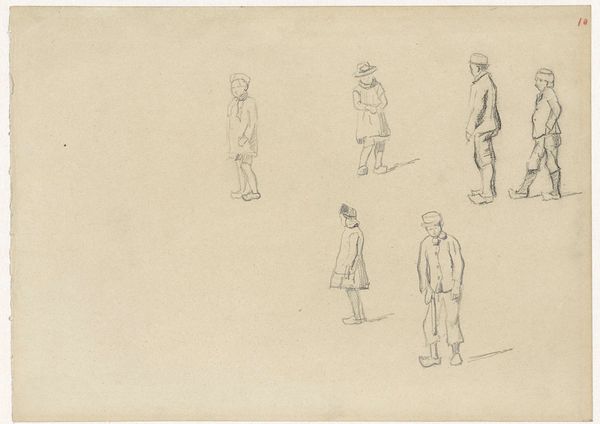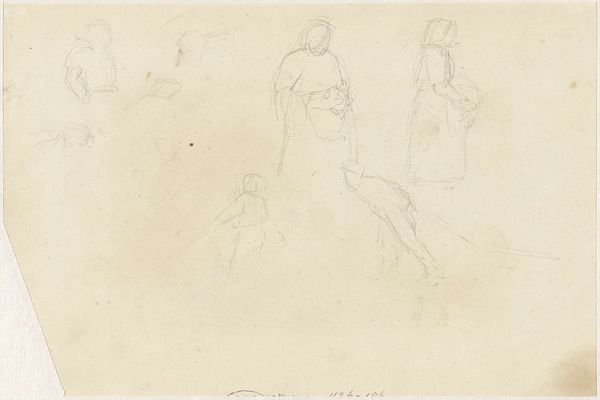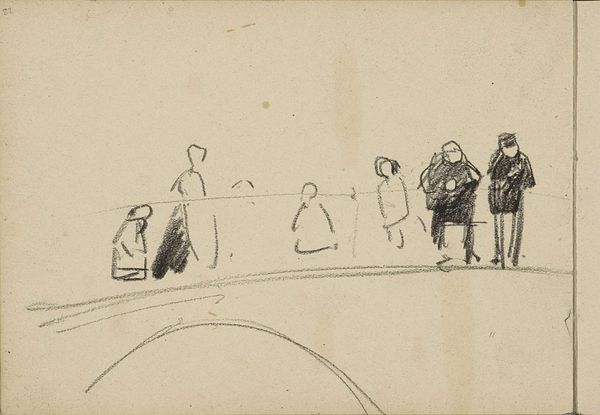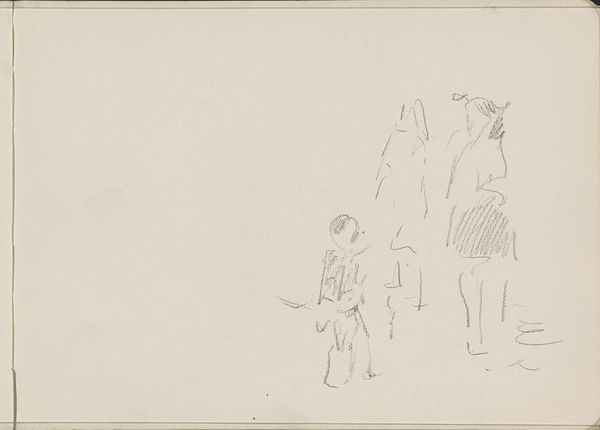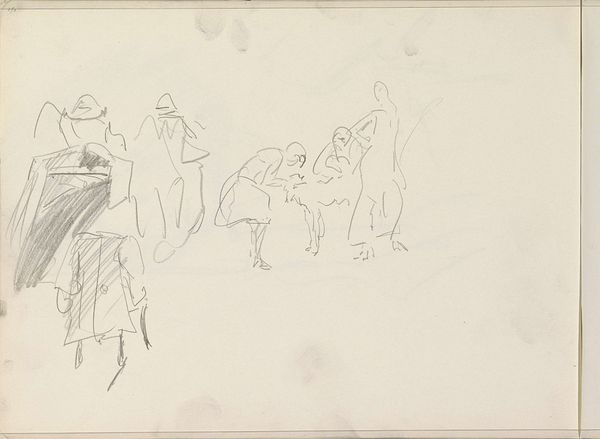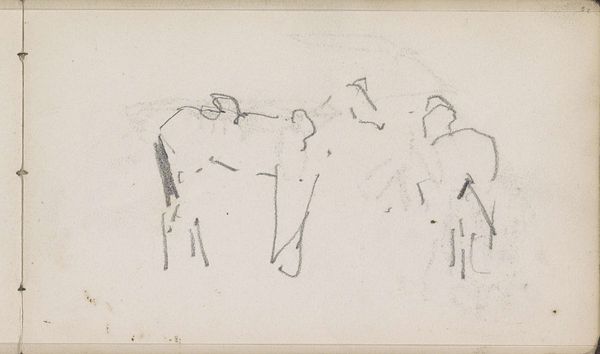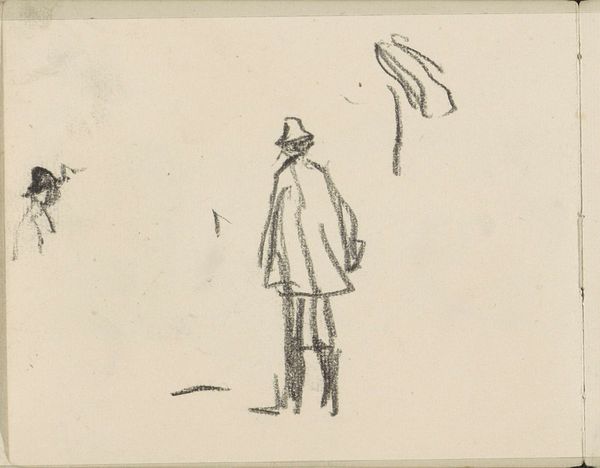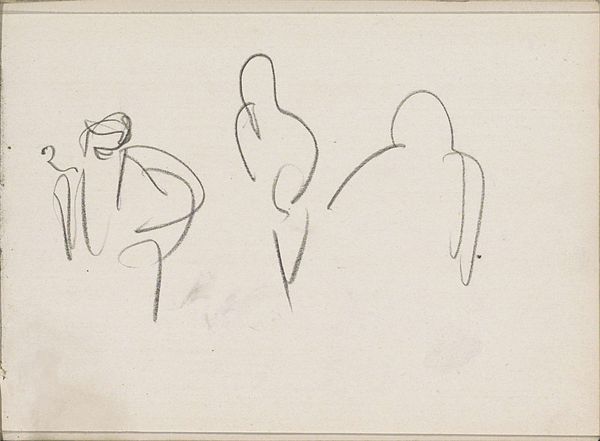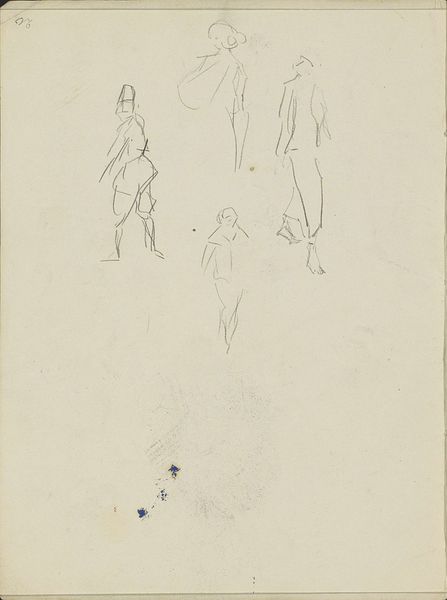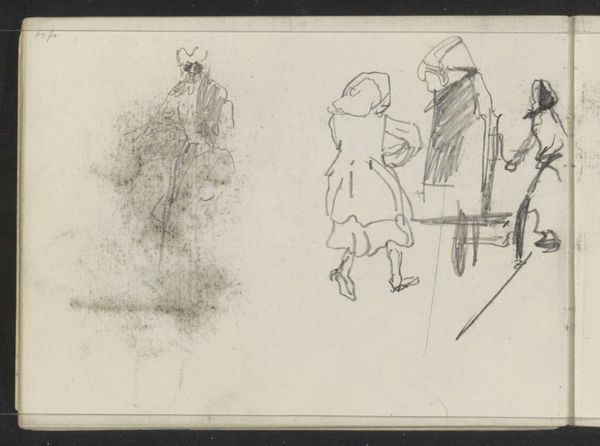
drawing, pencil
#
portrait
#
drawing
#
light pencil work
#
pen sketch
#
pencil sketch
#
figuration
#
personal sketchbook
#
ink drawing experimentation
#
pen-ink sketch
#
pencil
#
sketchbook drawing
#
pencil work
#
sketchbook art
#
initial sketch
Dimensions: height 94 mm, width 192 mm
Copyright: Rijks Museum: Open Domain
Curator: Looking at this pencil drawing, titled "Sketches of Children" by Anton Mauve, dating from 1848 to 1888 and held at the Rijksmuseum, what are your first thoughts? Editor: Immediately, I'm struck by the lightness of it. The delicate pencil strokes create these ephemeral, almost ghost-like figures. There's a quiet simplicity here, but also a sense of observation that invites you in. Curator: It’s interesting you mention simplicity. Mauve was part of the Hague School, a group of Dutch artists who embraced realism, often depicting everyday life, particularly the lives of the working class. How does that influence how we view these children? Editor: Well, in terms of its composition, it gives off the air of raw documentation, and the form of its figures indicates the bare minimum amount of information required for identification purposes. Curator: The medium and quick nature of the sketches speak to the social role of the artist and artwork as observer. These drawings most likely served a utilitarian, perhaps pedagogical purpose rather than being a means for self-expression. Editor: Perhaps, but I find the lines and tonal contrasts particularly intriguing. It's almost like he's trying to capture not just their forms, but their essence, their movements. He wants to say something. Curator: Or to understand something through seeing the social behavior of these subjects; there’s something quite tender in how he chooses to depict them amidst larger social observations of class and labor. These weren’t commissioned portraits, so how was this sketch produced, distributed, and circulated? Editor: That may never be determined due to the nature of sketchbooks. What interests me the most, regardless of historical background, is the work's structural quality and aesthetic considerations, allowing us to create multiple meanings from its minimalist arrangement. Curator: It is captivating how he gives these ordinary children so much importance using minimal marks and tonal variation within its artistic infrastructure, no doubt about that. Editor: Agreed; it serves as an object lesson that pure seeing can provide insight into ways of thinking through structural aesthetics.
Comments
No comments
Be the first to comment and join the conversation on the ultimate creative platform.
